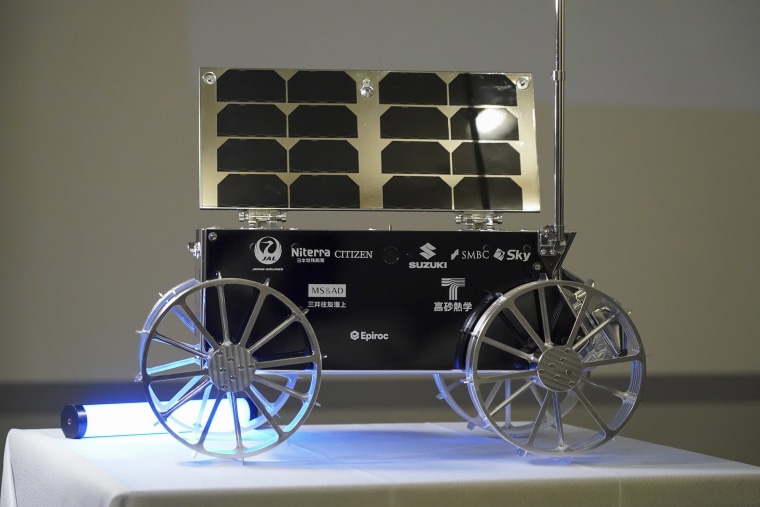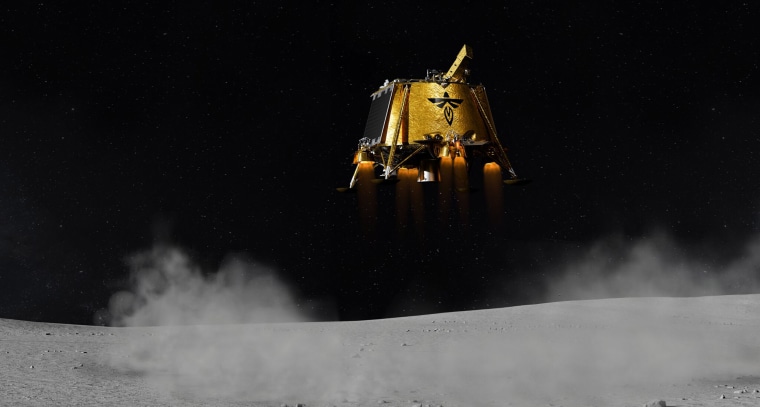A new year of lunar exploration kicked off early Wednesday, when two robotic landers and a small rover began their journeys to the moon.
A SpaceX rocket lifted off at 1:11 a.m. ET from NASA’s Kennedy Space Center in Florida, launching two separate, uncrewed missions to the lunar surface.
One of those missions, developed by Texas-based company Firefly Aerospace, aims to put a lander dubbed Blue Ghost down in a region of the moon known as Mare Crisium — a 340-mile-wide basin thought to be the site of an ancient asteroid impact.
The other mission, run by a Japanese company called ispace, involves a lander called Resilience and “micro rover” called Tenacious. Their targeted landing site is in a region called Mare Frigoris in the moon’s far north.
It will be ispace's second attempt to land a spacecraft on the moon. In 2023, its first try ended in disappointment, when its Hakuto lander unexpectedly accelerated during its descent and crashed on the lunar surface.

The ispace lander and rover are expected to take a longer, less energy-intensive path to the moon — arriving after four or five months — than Firefly Aerospace's Blue Ghost lander, whose journey should last 45 days.
Blue Ghost is carrying 10 NASA science instruments to the moon and is expected to spend about two weeks gathering data on the lunar surface.
Firefly Aerospace confirmed at around 2:25 a.m. ET Wednesday that it had received a signal from the lander in orbit around Earth.
NASA Administrator Bill Nelson congratulated Firefly Aerospace and SpaceX on the launch, saying on X that the expedition will prepare the agency “for future human missions to the lunar surface.”
The Blue Ghost mission is part of NASA’s Commercial Lunar Payload Services initiative, through which the space agency awarded contracts to several private companies to deliver science experiments, technology and other cargo to the lunar surface.
Those efforts are part of NASA's broader Artemis program, which aims to eventually return humans to the moon.
The Blue Ghost lander’s mission will inform future Artemis expeditions with astronaut crews, said Nicola Fox, associate administrator of the Science Mission Directorate at NASA.

It could, for instance, reveal new details about the moon’s landscape and terrain, including what might be expected at the lunar south pole, where the crewed Artemis missions will land. In the Mare Crisium area, where Blue Ghost is expected to touch down, the composition of lunar terrain is thought to be different from most of the landing sites visited by astronauts during NASA’s Apollo program — but more representative of the moon as a whole.
“This is a scientifically strategic and fruitful location that we zeroed in on because our future astronaut explorers will be able to use human intuition to be able to pick up scientifically interesting samples and bring them back to Earth,” Fox said Tuesday in a news briefing.
The science instruments that Blue Ghost is carrying to the moon include a tool that will help researchers measure the precise distance between Earth and the moon, another to study how much lunar dust sticks to different materials, and a third that can use a burst of compressed gas to collect and analyze samples of lunar soil.
“Each milestone we complete will provide valuable data for future missions and ultimately keep the United States and our international partners at the forefront of space exploration,” Jason Kim, CEO of Firefly Aerospace, said in the briefing.
SpaceX declined to reveal how much each company paid for the shared trip into orbit.
